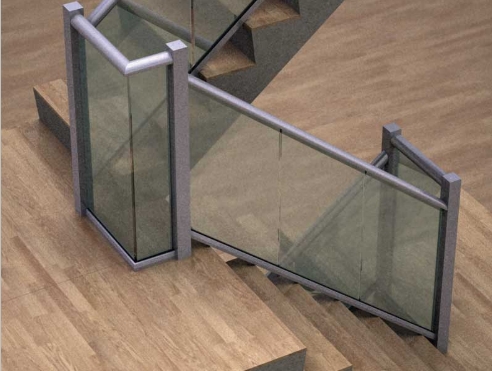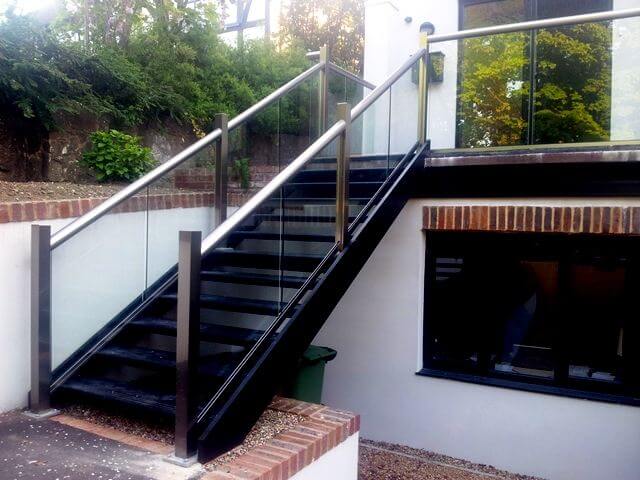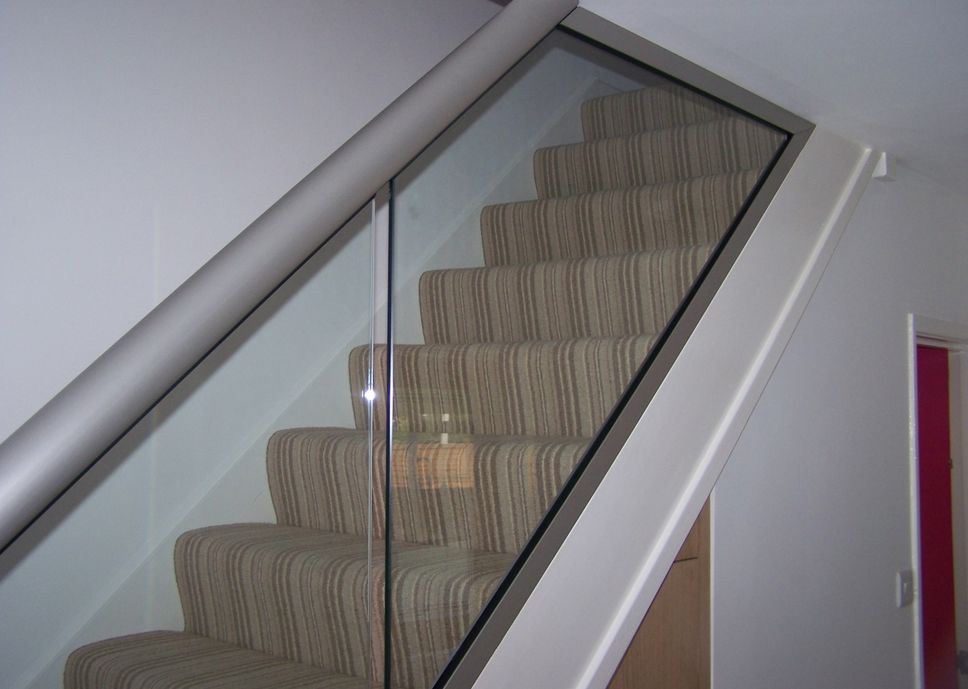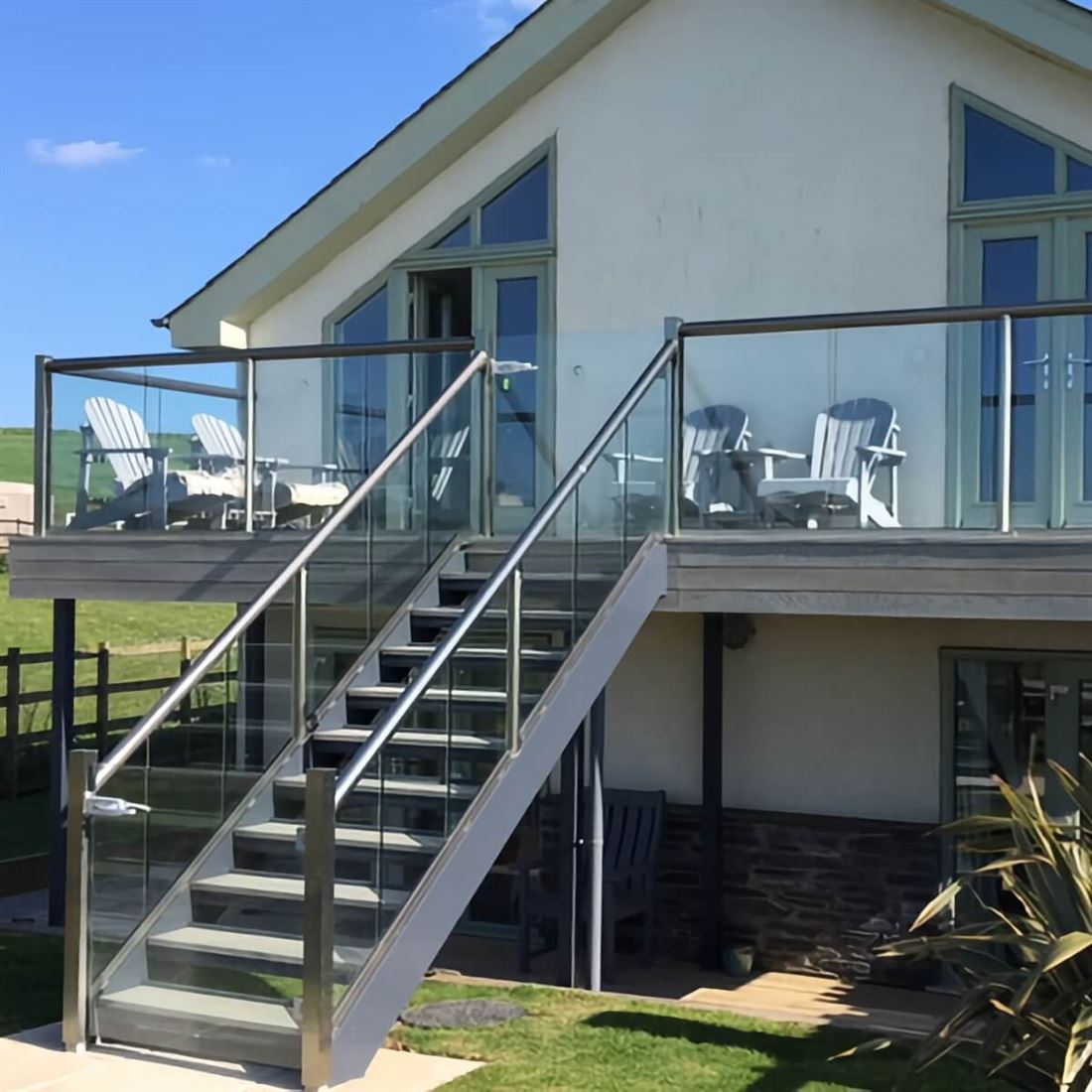Stair Glass Balustrades

Our staircase balustrading uses styles to match our regular balustrading. Handrails in Orbit or Aerofoil styles can form continuous runs from straight or curved level sections, or be applied to just the staircase sections. Handrails are made of anodised aluminium in our standard finished - unlike stainless steel they are maintenance-free and do not rust. The staircase system is suitable for indoor or outdoor use.
Balconette can customise the angle of the glass to go with many configurations of stairs. Glass balustrades to accompany steps and stairs are very well-suited to external use. Balcony adapts systems that were originally designed for balconies, to angle down exterior staircases, whether or not the steps lead off a balcony.


This video explains the best use of our systems on stairs.
For more information on our stair systems or to speak to one of our friendly sales consultants please call 01342 410411
Note: we do not supply or manufacture full staircases, Our system cannot “crank” the handrails around corners, nor is the system suitable for changing heights or angles that are not 90’. We do not supply or manufacture helical (spiral) stair runs, or curved stairs. Among our vailable options is a 72mm X 72mm Newel Post that now allows the Balcony System to be used on stair runs easily.
The principle of the system remains the same using the combined strength of the precision engineered handrail profiles and the strength of the glass. 72X72mm Newel posts are installed at the top and bottom of the stair runs. If the run is more than 2.7m then additional posts need to be installed in the middle of the run.
Glass Stair Railing
We highly recommend our economical factory-applied double side glass coating which minimizes cleaning for up to two years and then can be stripped off and re-applied by hand.


The Elegance and Safety of Glass Handrails for Staircases
Staircases serve as architectural focal points in any building, whether residential or commercial. They not only connect different levels but also contribute significantly to the overall aesthetic appeal of the space. When it comes to enhancing both safety and elegance, glass handrails for staircases stand out as a modern and sophisticated choice.
Glass handrails offer a seamless blend of functionality and style. The transparent nature of glass allows for unobstructed views, creating an illusion of spaciousness and continuity within the interior. This is particularly advantageous in smaller areas where traditional materials might make the space feel more enclosed. Moreover, the clean lines and minimalistic design of glass handrails complement a variety of architectural styles, from contemporary to minimalist to industrial.
One of the primary concerns with any staircase design is safety, and glass handrails excel in this aspect as well. Constructed from tempered or laminated glass, these handrails are exceptionally durable and resistant to breakage. Tempered glass, in particular, undergoes a heating and rapid cooling process that strengthens it significantly, making it several times stronger than regular glass. In the rare event of breakage, tempered glass shatters into small, blunt pieces, reducing the risk of injury compared to sharp shards.
The installation of glass handrails is a meticulous process that requires expertise and precision. The glass panels are typically mounted onto stainless steel or aluminum posts, creating a sleek and sturdy support structure. With advancements in technology and engineering, modern glass handrail systems can be customized to suit various design preferences and architectural requirements. From frameless designs that offer uninterrupted views to semi-framed options for added stability, there are plenty of choices available to cater to different needs.
Beyond their aesthetic and safety benefits, glass handrails for staircases also offer practical advantages. They are easy to clean and maintain, requiring only occasional wiping with a mild detergent and water to keep them looking pristine. Unlike traditional wood or metal handrails, glass does not corrode, rust, or degrade over time, ensuring long-lasting beauty and functionality.
In conclusion, glass handrails for staircases represent a harmonious marriage of form and function. They elevate the visual appeal of any space while providing essential safety features. Whether in a residential home, a commercial office building, or a public space, glass handrails make a bold statement and leave a lasting impression.
Enhancing Modern Interiors with Glass Stairs Balustrades
In the realm of interior design, the staircase often serves as a canvas for creativity and innovation. Beyond its utilitarian purpose of connecting different levels, the staircase presents an opportunity to infuse architectural flair and personality into a space. Among the myriad options available, glass stairs balustrades stand out as a contemporary choice that seamlessly integrates style and functionality.
Glass stairs balustrades offer a modern twist on traditional staircase design, imparting a sense of lightness and openness to any interior. By replacing conventional materials like wood or metal with transparent glass panels, these balustrades create a visually striking focal point that enhances the overall aesthetic appeal of the space. The transparent nature of glass allows for unobstructed views, promoting an open and airy atmosphere that is especially desirable in smaller or confined areas.
Beyond their aesthetic appeal, glass stairs balustrades prioritize safety without compromising on style. Constructed from toughened or laminated glass, these balustrades are exceptionally durable and resistant to breakage. Tempered glass undergoes a specialized thermal treatment process that strengthens it, making it significantly stronger than regular glass. In the unlikely event of breakage, tempered glass fractures into small, blunt pieces rather than sharp shards, minimizing the risk of injury.
The installation of glass stairs balustrades requires careful planning and precision to ensure structural integrity and visual cohesion. Modern glass balustrade systems utilize sleek stainless steel or aluminum fittings to secure the glass panels in place, creating a seamless and minimalist aesthetic. From frameless designs that appear to float effortlessly to semi-framed options for added support, there are a variety of configurations available to suit different design preferences and architectural requirements.
In addition to their aesthetic and safety benefits, glass stairs balustrades offer practical advantages as well. They are easy to clean and maintain, requiring only occasional wiping with a damp cloth to remove dust and fingerprints. Unlike traditional balustrade materials, such as wood or wrought iron, glass does not corrode, warp, or degrade over time, ensuring long-lasting beauty and functionality.
In conclusion, glass stairs balustrades represent a sophisticated and contemporary approach to staircase design. They enhance the visual appeal of any interior while prioritizing safety and durability. Whether in a residential home, a commercial space, or a public building, glass stairs balustrades make a bold statement and elevate the overall design aesthetic.
Elevating Interiors with Innovative Balustrade Solutions for Stairs
Balustrades, often overlooked in their significance, play a pivotal role in both the safety and aesthetic appeal of staircases. They serve as guardians, guiding us as we ascend or descend, while also contributing to the overall visual impact of the space. In the realm of interior design, innovative balustrade solutions for stairs are emerging as key elements in elevating the style and functionality of modern interiors.
Traditionally, balustrades were constructed from materials like wood, metal, or stone, each offering its own unique charm and character. However, contemporary design trends are embracing alternative materials and techniques to create balustrades that are not only visually captivating but also highly functional and adaptable to various architectural styles.
One such innovative solution is the use of mixed materials in balustrade construction. By combining elements like glass, metal, and wood, designers can create dynamic compositions that add depth and texture to staircases. For example, a balustrade featuring a combination of sleek metal posts and transparent glass panels can impart a sense of modern elegance, while integrating wooden handrails or accents can introduce warmth and organic charm.
Another trend gaining traction in the realm of balustrade design is the incorporation of decorative elements and intricate patterns. Laser-cut metal panels, for instance, can be used to create stunning motifs inspired by nature, geometry, or cultural motifs, adding a touch of artistry to staircases. Similarly, glass panels can be customized with frosted or etched designs, infusing the space with a sense of sophistication and personality.
In addition to their aesthetic appeal, innovative balustrade solutions prioritize safety and functionality. Advanced engineering techniques and materials ensure that these balustrades meet stringent safety standards while offering durability and reliability. From structural glass balustrades with minimalistic frames to cable railing systems that provide unobstructed views, there are numerous options available to suit different design preferences and architectural requirements.
Furthermore, the integration of technology into balustrade design is revolutionizing the way we interact with our surroundings. Smart balustrade systems equipped with sensors and lighting elements not only enhance safety but also create immersive and interactive experiences. For example, LED lighting integrated into handrails can illuminate staircases, guiding users in low-light conditions, while motion sensors can detect approaching individuals and adjust lighting levels accordingly.
In conclusion, innovative balustrade solutions for stairs are redefining the possibilities of staircase design. They offer a perfect marriage of form and function, combining aesthetic appeal with safety, durability, and adaptability. Whether in residential homes, commercial spaces, or public buildings, these balustrades serve as architectural statements that elevate the overall design aesthetic and enhance the user experience.





